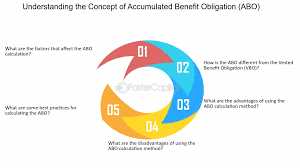What is Vested Benefit Obligation?
Vested Benefit Obligation (VBO) is a term used in the field of finance and accounting to refer to the present value of the pension benefits that employees have earned and are entitled to receive in the future, based on their years of service and salary history. It represents the amount that a company is obligated to pay to its employees upon retirement.
When an employee’s benefits become vested, it means that they have met certain criteria, such as reaching a certain number of years of service, and are now entitled to receive their pension benefits. The VBO represents the present value of these vested benefits.
The mechanics of calculating the VBO involve using actuarial assumptions and formulas to estimate the present value of the future pension benefits. These calculations can be complex and require expertise in actuarial science. Companies often rely on the services of actuaries to perform these calculations accurately.
Mechanics of Vested Benefit Obligation Calculation
Step 1: Determining the Benefit Formula
The first step in calculating the VBO is to determine the benefit formula used by the company to calculate retirement benefits for its employees. This formula typically takes into account factors such as years of service, average salary, and a predetermined percentage or multiplier.
Step 2: Collecting Employee Data

Once the benefit formula is established, the company needs to collect relevant data for each employee, including their age, years of service, and salary history. This data is essential for accurately calculating the VBO.
Step 3: Projecting Future Benefits
Using the collected employee data, the company can project the future retirement benefits for each employee based on the benefit formula. This projection takes into account factors such as salary increases, changes in employment status, and other relevant variables.
Step 4: Discounting Future Benefits
Since the VBO represents the present value of future retirement benefits, it is necessary to discount these future benefits to their present value. This is done by applying an appropriate discount rate, which reflects the time value of money and the company’s cost of providing these benefits.
Step 5: Aggregating Individual VBOs
Once the individual VBOs are calculated for each employee, they are aggregated to determine the total VBO for the company. This provides an overall measure of the company’s financial obligation towards its employees’ retirement benefits.

Emily Bibb simplifies finance through bestselling books and articles, bridging complex concepts for everyday understanding. Engaging audiences via social media, she shares insights for financial success. Active in seminars and philanthropy, Bibb aims to create a more financially informed society, driven by her passion for empowering others.
